Enriching your life by drinking responsibly
How people used alcoholic drinks
For thousands of years, humans have been continuously making alcohol.
It has accompanied people's lives, not only as a drink but also sometimes playing a cultural or religious role.
Alcohol and culture
Alcohol, which we have enjoyed with and have evolved over thousands of years
There are various theories about when humans first started making alcohol, but wine, which is considered to be one of the oldest alcoholic beverages, was first made around 7000 years ago, and beer around 5000 years ago.
Winemaking, which started in the Caucasus region, rapidly spread throughout Europe during the Roman period. Originally, wine was considered an alcoholic beverage offered to the gods. In medieval Europe, wine was considered so sacred and precious that it was referred to as “the blood of Christ.”
On the other hand, beer is thought to have spread from ancient Mesopotamia and Egypt. At the time, beer was an important source of nutrition and a reward for labor, and this is depicted in the murals that remain. Later, it was introduced to Europe, the home of beer today, and the majority of the more than 100 types of beer today originated in Europe. As it spread across Europe, which has a diverse range of terrain, climate, and vegetation, beers unique to each region were born one after another.
In the Middle Ages, the technology for distilling fermented beverages was established, and people began crafting distilled beverages. Distilled beverages made from the crops harvested in each region were born one after another, such as whisky from barley, brandy from grapes, and tequila from cacti.
In this way, alcoholic beverages have evolved in diverse ways while being nurtured by the local climate and have been enjoyed by people worldwide for thousands of years. It is also interesting to note that people worshipped protective deities such as Gambrinus, the god of beer, Bacchus, the god of wine in ancient Greece, and Okuninushi, the god of harvests in Japanese mythology, in order to make delicious alcohol. From ancient times, people have used alcohol in religious ceremonies and celebratory events, and they have continued to enjoy it not only as a drink but also for its cultural value.
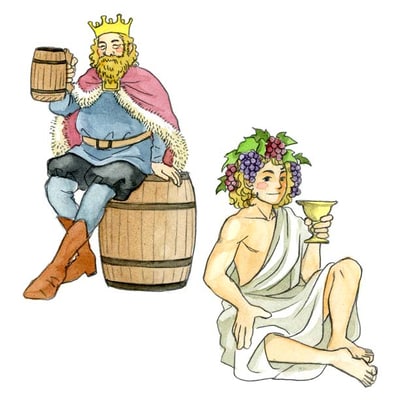
Japanese people and alcohol
History of Japanese alcohol
The Japanese have a long history of drinking alcohol, and there is even a theory that sake brewing began in the Jomon period.
Although the brewing method using rice and malted rice was established in the Nara period, mainly the privileged classes enjoyed it until the Heian period. It was not until the Kamakura period, when sake breweries began to flourish and became available to the general public.
By the Edo period, sake was being produced in large quantities using a brewing method almost identical to the modern method, and the general public began to enjoy it daily.
After the Meiji Restoration, Western food culture spread, along with beer, wine, whisky, and other alcoholic beverages from overseas. This was the beginning of the diverse drinking styles we enjoy today.
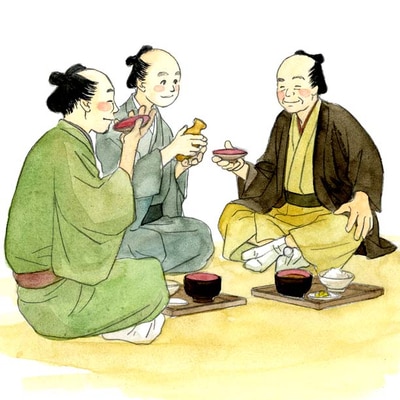
The wonderful drinking culture of Japan
From ancient times, the Japanese have treated alcohol as something sacred. For example, they believe that by sharing the sake that was offered to the gods they can deepen their connection with the gods. Even today, sake is used as an offering to the gods, for purification, and in ceremonies and events, and it plays a role in connecting people with the gods.
In this way, the Japanese have found more value in sake than just drinking it and have refined how they used it.
For example, you can learn about the Japanese approach to drinking in Hyakka-setsu-rin (The Hundred Schools of Thought), a collection of essays from the Edo period. Furthermore, Shudo, which is said to have originated in the Ashikaga period, was based on the idea of “drink not aiming to get drunk, but making sake more elegant and wonderful,” and it sought to instill politeness and enhance spirituality through drinking occasions.
Enjoying alcohol while appreciating the beauty of the four seasons, such as cherry blossoms, the moon, and autumn leaves, is also a graceful custom characteristic of the Japanese culture. We should have inherited the aesthetic sense related to consuming alcohol that our predecessors have refined. At the very least, we should refrain from drinking in a way that causes trouble for others when we enjoy the cherry blossoms.
Ten Benefits of Drinking
FromThe Hundred Schools of Thought
1. Keep your manners
2. Reward your labor
3. Forget your worries
4. Open up your depression
5. Keep your spirits up
6. Prevent illness
7. Eliminate poison
8. Be friendly with others
9. Connect with others
10. Prolong life
-
*“Reward your labor” has the effect of relieving fatigue.
“Relieve depression” has the effect of stabilizing the mind and relieving stress.
From “The Merits and Demerits of Alcohol” by Takeo Koizumi and “Alcohol and Health Vol. 15” by the Japan Society of Alcohol Health and Medicine
Source
-
“ABC Dictionary of Alcohol and Health” (Kirin Brewery Company, Limited)
-
The Kojiki
The benefits of alcohol consumption
Alcohol has a variety of benefits, such as helping you to feel relaxed and at ease, improving communication, increasing your appetite, and enhancing the flavor of food.
Take a moment to relax
A moment of healing in your life
The right amount of alcohol can help you relax, change your mood, and feel at ease.
Learning to enjoy it in moderation can also become an essential element that enriches your everyday life.
The ingredients of alcoholic beverages vary, and so do their taste and aroma. Hops, which are often used to make beer, are said to have a calming effect and stimulate the appetite. Wine, which also goes well with food, relaxes the mind.
However, if you try to change your mood by drinking alcohol alone, you may suffer from physical disorders or even become an alcoholic. Enjoy the taste and aroma while drinking slowly and in moderation.
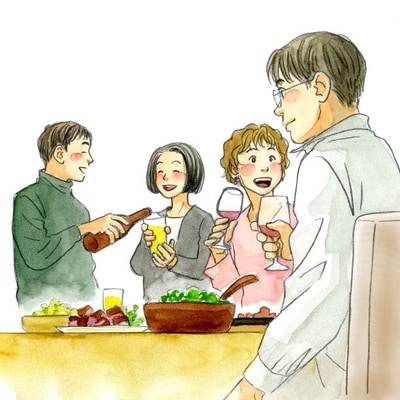
Social Drinking
Facilitating communication
Alcohol as a communication tool
Since ancient times, alcohol has served as a key tool for facilitating communication between people.
For example, it plays an important role at many milestones in life, such as the three-times-three exchange of nuptial cups at a wedding, toasting at a funeral, toasting at the end of the year and the beginning of the new year, welcoming and sending off friends and colleagues, and so on.
In this way, alcoholic beverages, which bring people together and facilitate communication, can enrich our lives when consumed in moderation.
However, if we drink too much or use it in the wrong way, it can have unexpected negative effects, and it can even be a poison that causes suffering not only for the drinker but also for those around them.
The way we drink alcohol is a reflection of who we are.
By acquiring the correct knowledge, we can make the drinking occasions more meaningful.
A bridge to a new world
Alcohol can help smooth communication between people. Being able to talk honestly and close the gap between people or become friends with someone much older or younger than you, is an enrichment we can get from drinking occasions. You may unexpectedly hit it off with someone you have just met.
In this way, alcohol can be useful in creating opportunities to expand your world, such as introducing you to values you were previously unaware of or meeting new friends and hobbies.
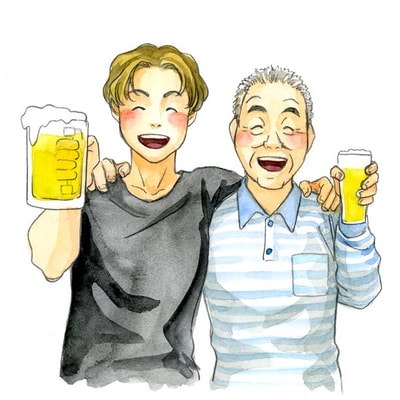
Consumer opinions on drinking alcohol
| Opinions on drinking alcohol | Percentage of respondents who answered "Strongly agree" |
|---|---|
| Alcohol deepens communication between people | 90.7 |
| Alcohol livens up the atmosphere of a place | 85.1 |
| Moderate amounts of alcohol enrich life | 82.8 |
| Moderate amounts of alcohol are good for mental and physical health | 80.7 |
| Alcohol is good for relieving stress | 77.0 |
| Alcohol enhances the taste of food | 70.8 |
| Alcohol is necessary for building relationships with people who are older or younger than you | 70.7 |
Extract from the results of a Kirin Beer consumer survey (summer 2017)
The food tastes better
The perfect relationship between alcohol and food
Just as there are dishes unique to each region of the world, there are drinks that go well with the local cuisine, such as sake, wine, beer, vodka, and laojiao. Alcohol creates a relaxed mood and helps make the dining table a more pleasant place, and the perfect combination of food and drink has helped to enrich the food and drinking culture of each country and region.
Also, drinking alcohol on an empty stomach can make you feel drunk very quickly and can even damage the stomach lining, so drinking alcohol while eating is actually good for you.
Moderate amounts of drinking can stimulate your appetite and enhance the flavor of the food.
In particular, beer is said to be very effective at stimulating the appetite, thanks to its refreshing bitterness and carbonation. Also, just like wine pairing, if you choose your drink to match the food, you can enjoy it even more. Let's discover the similarities between food and alcohol and the unexpected combinations you can make.
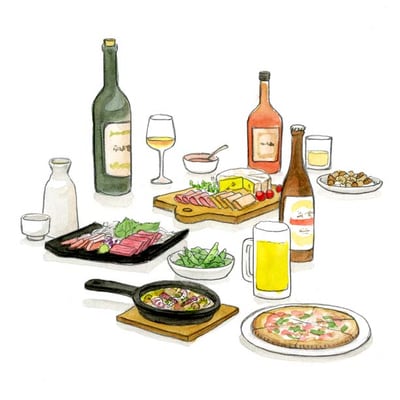
The deep and mysterious world of alcohol
The more you learn, the more you discover about the deep and mysterious world of alcohol.
For example, there are over 100 different types of beer, and with the recent popularity of craft beer, the ways of drinking and enjoying beer are becoming more diverse. There are also more and more people who enjoy beer with fruity flavors like wine and cocktails, as well as flavors that are easy to drink, even for those who don't like beer. It is also said that the aroma of wine, whiskey, and hops in beer has a relaxing effect. Furthermore, the ways of combining food and drinking situations will continue to evolve.
The more you deepen your knowledge, the more your intellectual curiosity will be piqued. By finding your own way to enjoy it, whether it's being particular about how you drink it or the glasses you use or exploring the history and culture surrounding alcohol, you can create a rich and rewarding experience.
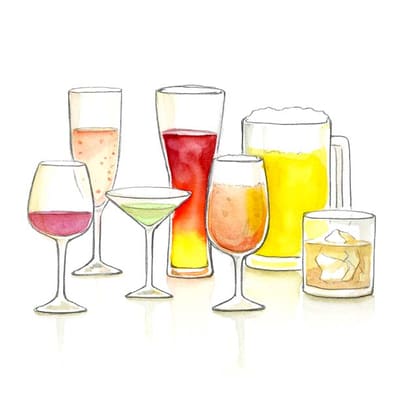
The drinking etiquette
For a richer experience
Drinking is a privilege that is only permitted to adults. Moreover, as you get older, your experience becomes richer, and you can enjoy even better.
In particular, in Europe and America, where wine culture has long been established, wine can be a lubricant for communication in business situations and at parties. This is also a sign of sophistication for adults, as people from various countries can easily talk about wine's taste and production areas as a common topic.
Also, knowing the correct etiquette for drinking alcohol is another sign of being an adult. In Japan, people tend to let their hair down when they drink, but drinking in a dignified manner that takes into account the time, place, and occasion is the mark of a sophisticated person. It sets a good example for the younger generation. Above all, acting calm and smart will fill the drinker's heart with a sense of fulfillment. Finishing the day with an elegant drink free from excesses and emotional upheaval is the ultimate luxury.
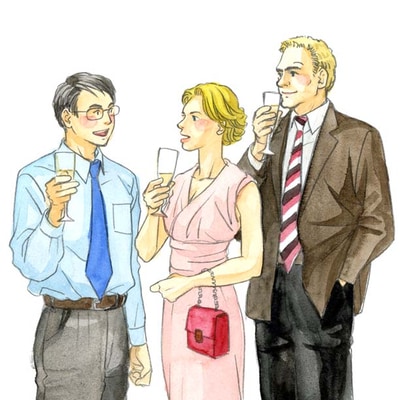
Alcohol and inspiration
Sake accompanies many heartfelt moments
Sake is often drunk at the many milestones in life when people gather together, such as celebratory events and welcome and farewell parties. It is also drunk in everyday situations where people come into contact with each other, and it accompanies many emotions that arise there.
A bottle your boss offered you while encouraging you, the cup of sake your daughter poured for you on the night before her wedding, and the toast you made with all your friends to celebrate your departure. Sake is always a supporting actor, but it helps convey certain feelings more effectively.
People have picked up a glass of drink in their hands when they are happy or sad. Of all the food and drink, alcoholic beverages are often portrayed in a memorable way in films and novels, and this is because alcohol has accompanied people's every heartfelt moment, including joy, pain, happiness, and regret.